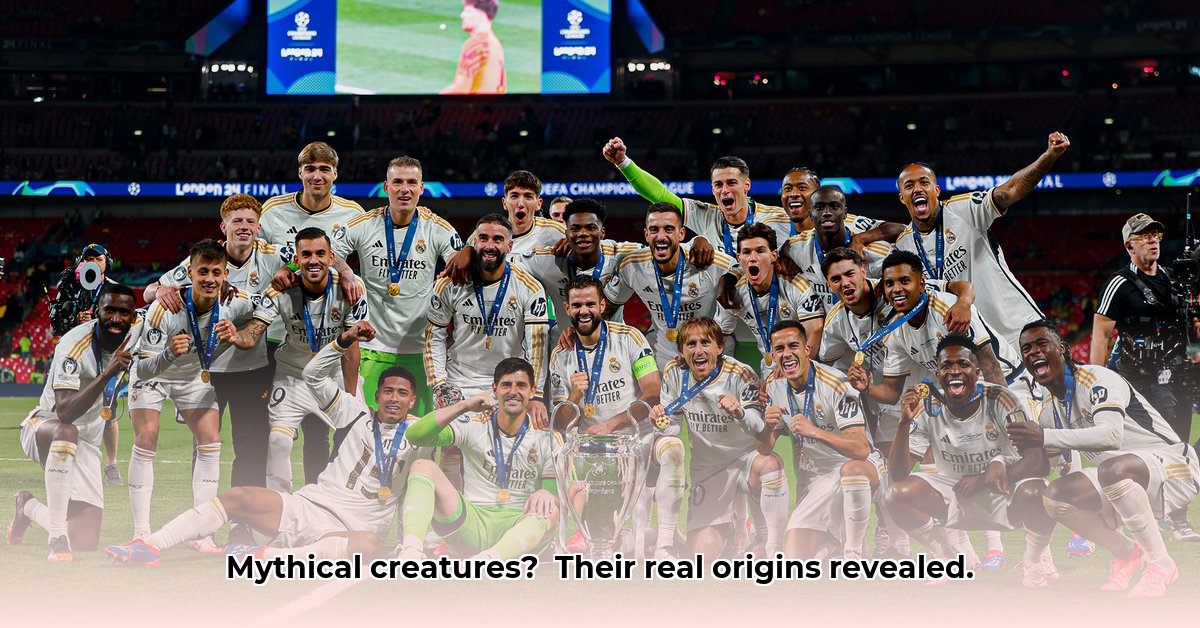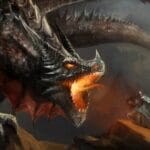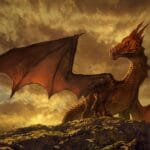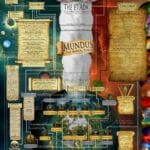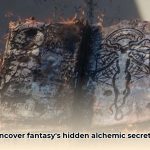Ever look at a uniquely shaped tree root and think, “That kinda looks like a dinosaur claw”? Or marveled at the colossal size of a whale during a nature documentary and imagined a kraken lurking in the deep? It turns out, many of our favorite mythical creatures – from dragons to krakens and beyond – might have their origins in real-world observations. This isn’t to say dragons actually soared through the skies, but there’s compelling evidence to suggest that fossils, misunderstood animal behaviors, and the boundless capacity of human imagination combined to birth these legendary beasts. We’ll explore how ancient bone discoveries could have sparked dragon legends, investigate the real-life animals whose characteristics may have inspired fantastical creatures, and analyze how diverse cultures imprinted their unique values and beliefs onto these enduring myths. So, let’s embark on a journey to uncover the surprising connections between fact and fantasy, revealing the captivating stories behind these enduring myths.
The Deep Roots and Real-World Inspirations of Mythical Creatures
Let’s be honest: dragons and krakens – creatures that populate myths and legends – have held a powerful grip on our imaginations for centuries. But where did these fantastical beasts truly come from? Were they solely the products of our ancestors’ creative minds, or did something tangible – something more real – serve as the catalyst for their creation? The answer, as is often the case with enduring mysteries, likely lies in a fascinating blend of both. Fossil misinterpretations, the striking attributes of existing animals, and the potent influence of cultural narratives all played a role in shaping these iconic figures.
Fossils: Ancient Bones, Modern Myths, and Dinosaur Discoveries
Envision yourself as an early human, perhaps a hunter-gatherer, and you stumble upon a collection of enormous, strangely shaped bones jutting out from the earth. You’ve never encountered anything remotely similar. They’re immense, unlike any animal you recognize. What would you logically think they are? It’s easy to understand how incomplete dinosaur fossils – especially those unearthed long before the science of paleontology emerged – could ignite the legends of dragons. These ancient bones, partially buried and weathered by the elements, became blank canvases for the human imagination, providing a tangible framework for tales of powerful, fire-breathing beasts. Each culture, encountering these remains, added its own unique spin, resulting in vastly different dragon legends across the globe. The discovery of dinosaur fossils, therefore, played a pivotal role in the genesis of legendary monsters.
Real-World Inspiration: Dragons Among Us? Revealing Animal Attributes
But the story doesn’t conclude with misinterpreted bones. Take a closer look at the natural world, and you’ll uncover some startling parallels to legendary creatures. Consider crocodiles – their imposing size, their immensely powerful jaws, their armor-like scales. They evoke a sense of primal power, right? Then there’s the Komodo dragon, a real-life lizard possessing a venomous bite and formidable presence. And let’s not overlook the constricting might of pythons and boas, capable of subduing large prey. Even the smaller, gliding Draco lizards, with their remarkable skin flaps that function as wings, offer a glimpse of the aerial prowess often attributed to dragons. It’s highly plausible that these real creatures, or perhaps a combination of their most striking features, contributed significantly to the dragon myth. They provided a foundation, a tangible starting point upon which the imagination could build.
A World of Dragons: Cultural Variations and Global Legends
Dragons, it’s important to acknowledge, aren’t a monolithic concept. Contrast, for example, the fearsome, treasure-hoarding Western dragon – often depicted as a destructive force – with the benevolent, frequently water-associated dragons of Eastern mythology, which are often revered as symbols of power, wisdom, and good fortune. These striking differences underscore the profound influence of cultural beliefs and social structures on the stories we tell. Essentially, dragons aren’t static entities; they evolve and adapt alongside the cultures that create and perpetuate their stories. This explains why dragons exhibit such unique appearances and behaviors across diverse civilizations.
The Limits of Knowing: Unanswered Questions and the Mythical Realm
While the evidence strongly suggests a correlation between real-world observations and dragon myths, it’s crucial to acknowledge the inherent limitations in our understanding. It’s difficult, if not impossible, to definitively pinpoint the precise origins of every detail within a given dragon legend. Consider this: was it a single, particularly striking fossil discovery that sparked the entire dragon concept, or was it a gradual accumulation of observations and evolving stories passed down through countless generations? The truth likely resides somewhere in the complex interplay of these factors, contributing to the ongoing creation and evolution of the myth.
Kraken: Monsters of the Deep and Ancient Sea Monsters
Let’s now shift our focus to the kraken, the legendary sea monster boasting massive tentacles capable of dragging entire ships to the ocean floor. Seafaring cultures have always faced the ever-present dangers of the vast, unexplored oceans, and the kraken’s legend likely emerged from encounters with colossal squid or, perhaps, even distant whale sightings distorted by stormy weather. The sheer scale of the deep ocean, combined with the mysteries it holds, has always fostered fantastical storytelling, resulting in myths rooted in both genuine dangers and the unknown creatures that lurk beneath the waves.
The Ongoing Search: A Never-Ending Story and Cultural Heritage
The quest to fully understand the origins of mythical creatures remains a captivating and ongoing journey. As we continue to unearth new fossils, deepen our understanding of the unusual creatures that populate the world around us, and explore the unexplored depths of the oceans, our comprehension of the intricate connections between legend and reality will undoubtedly expand. Dragons and krakens—along with countless other mythical beasts—stand as powerful testaments to the human capacity for both observation and invention, for transforming ambiguity into the extraordinary, and for crafting and retelling stories that shape our understanding of the world, both real and imagined. The mystery, compellingly, continues to unfold.
Thinking Outside the Box: Other Mythical Creatures and Legendary Beasts
The same underlying principles that apply to dragons and krakens can be extended to a multitude of other mythical creatures. Unicorns, for example, may have been inspired by sightings of the rare rhinoceros, distinguished by its single, prominent horn. Griffins, with their striking combination of eagle heads and lion bodies, could represent a fusion of powerful predators observed in distinct environments. The possibilities, it seems, are as boundless as the human imagination itself.
Table: Potential Real-World Inspirations for Mythical Creatures and Ancient Folklore
| Mythical Creature | Potential Real-World Inspiration | Key Characteristics |
|---|---|---|
| Dragon | Dinosaurs (fossils), Crocodiles, Komodo Dragons, Snakes, Volcanic Activity | Size, scales, serpentine form, potential for fire (volcanic eruptions), flight capabilities (Draco lizards) |
| Kraken | Giant Squid, Whales, Deep-Sea Ecosystems | Immense size, powerful tentacles, association with the ocean depths |
| Unicorn | Rhinoceros, Oryx | Single horn, perceived purity and grace |
| Griffin | Eagles, Lions | Combined features of powerful avian and terrestrial predators, symbolizing strength and wisdom |
| Centaur | Horses, Humans (potentially misinterpretations of ancient burial practices or artistic representations) | Human-animal hybrid, blending intellect and primal instincts |
| Mermaid | Manatees, Dugongs | Aquatic mammals with a superficial resemblance to human-fish hybrids |
| Phoenix | Bennu Bird (Ancient Egypt), Solar Phenomena | Association with fire, rebirth, and cyclical renewal |
The exploration into the origins of mythical creatures continues to be a captivating endeavor, seamlessly blending scientific inquiry with nuanced cultural interpretation. While we may never attain definitive answers to every question, the very act of searching serves as a testament to our enduring curiosity and our persistent fascination with the intricate interplay between reality and the boundless realms of imagination.
How did specific real-world animals influence the diverse cultural depictions of dragons? Exploring Monster Legends
Have you ever paused to consider the origins of dragon myths? Were these fantastical beings simply flights of fancy, or did something more… earthly provide the initial spark? Let’s embark on a journey into the fascinating intersection of reality and legend, exploring the animal origins of dragons and their profound cultural impact across diverse societies.
Fossils: Misinterpretations and the Birth of Monsters and Prehistoric Remains
Imagine for a moment stumbling upon a massive, fossilized bone. Incomplete, weathered by the passage of time, how would you, lacking modern scientific knowledge, interpret such a find? Early humans, encountering the skeletal remains of long-extinct creatures like dinosaurs, likely filled in the gaps with their own existing understanding and boundless imaginations. A colossal thigh bone might be envisioned as the leg of a monstrous serpent, while a skull could easily transform into the head of a terrifying, fire-breathing beast. How did specific real-world animals influence the diverse cultural depictions of dragons? The answer, in part, resides within these often-misinterpreted fossils. Their skeletal structures, while incomplete, provided a rudimentary framework upon which the dragon myth could begin to take shape.
Real-World Inspirations: From Snakes to Crocodiles and Modern Reptiles
Now, consider the serpentine form that is common to many early dragon depictions. Large snakes, with their movements that are both graceful and undeniably terrifying, readily lend themselves to such imagery. Similarly, the powerful jaws and armored hide of crocodiles—ancient predators in their own right—could have contributed to the dragon’s terrifying visage. Komodo dragons, with their impressive size, venomous bite, and formidable presence, offer a more recent, real-world analog to these mythical creatures. The inherent characteristics of these reptiles – their size, scales, and, in some cases, their aggressive behavior – provided essential building blocks for the unfolding myth.
Cultural Variations: East Meets West and Global Mythology
It’s crucial to recognize that the dragon takes on vastly different forms across the globe, reflecting the unique cultural values and beliefs of each society. In Western cultures, dragons are often portrayed as ferocious beasts, embodying chaos, destruction, and greed. Think of the fearsome dragons battling valiant knights in countless medieval tales. In stark contrast, Eastern cultures frequently depict dragons as benevolent, even sacred beings, closely associated with prosperity, rain, and immense power. Consider the majestic, serpentine dragons of Chinese mythology; their symbolism is worlds apart from their Western counterparts. These fundamental differences in cultural interpretation reveal a great deal about underlying societal values and anxieties. How did specific real-world animals influence the diverse cultural depictions of dragons? The answer, as we can see, depends heavily on the specific cultural lens through which these creatures are viewed.
The Evolving Dragon: A Synthesis of Myths and Reality and Cultural Narrative
The evolution of dragon imagery itself is quite remarkable, reflecting a dynamic interplay between real-world observations, cultural interpretations, and the boundless capacity of the human imagination. Early depictions are often primarily serpentine, suggesting a strong influence from the world’s largest snakes. However, the later addition of wings and fire-breathing abilities suggests a more complex evolution, likely fueled by both human creativity and the misinterpretation of natural phenomena. The fire-breathing element, for instance, could even stem from observations of volcanic eruptions, which are undeniably powerful and awe-inspiring events.
Key Takeaways:
- Dragon myths originated from a fascinating blend of misinterpreted fossils, real-world animals (particularly large reptiles), and the ever-present influence of cultural interpretations.
- The serpentine form that is so prevalent in many early dragon depictions likely arose from human encounters with large snakes.
- Cultural variations in dragon imagery directly reflect underlying societal values and anxieties. Western dragons often embody chaos and destruction, while Eastern dragons frequently represent power, prosperity, and benevolence.
- The addition of wings and fire-breathing in later dragon depictions may reflect the combined influence of artistic creativity and the misinterpretation of natural phenomena, such as volcanic eruptions.
- Unraveling the precise origins of dragon myths remains a compelling and ongoing challenge, requiring insights from various disciplines, including paleontology, zoology, anthropology, and folklore.
Cultural Interpretations of Dragon Myths Across Geographic Regions Exploring Legends and Folklore
Key Takeaways:
- Dragon myths, while lacking a single, definitive real-world origin, reflect humanity’s universal tendency to interpret the world through potent and enduring symbols.
- Cultural Interpretations of Dragon Myths Across Geographic Regions reveal a fascinating array of nuanced perspectives on power, the natural world, and the intricate tapestry of the human condition.
- Fossil discoveries, often misinterpreted by ancient peoples, may have contributed to certain aspects of dragon imagery and lore.
- Real-world animals – ranging from crocodiles and Komodo dragons to various species of snakes – likely inspired specific dragon characteristics and attributes.
- The enduring presence of dragons in modern culture underscores their continuing relevance and remarkable adaptability, allowing them to resonate with successive generations.
Fossils and Misinterpretations: The Seeds of Legend? and Ancient Theories
Imagine for a moment stumbling upon a colossal, fossilized bone protruding from the earth. How might you, lacking the benefits of modern scientific knowledge, interpret such a discovery? Our ancestors, often lacking modern paleontological understanding, frequently interpreted such finds as remnants of powerful, mythical creatures. Incomplete skeletons, particularly those of dinosaurs or other prehistoric giants, might have readily fueled their imaginations, shaping early concepts of dragons. Think of the sheer size and imposing nature of a Tyrannosaurus Rex skull—a terrifying sight to someone unfamiliar with the concept of extinction. Were these ancient discoveries the initial spark that ignited the global dragon myth? It’s certainly a plausible scenario, although we may never know with absolute certainty.
Real-World Inspirations: More Than Just Fire and Fury and Animal Analogies
While the remains of giant extinct reptiles may have provided the initial spark for the dragon legend, many dragon characteristics find compelling echoes in existing animals that inhabit our planet. The serpentine form that is so common in dragon lore? Consider the enormous constrictors that slither through the jungles, embodying power and stealth. The scales and claws that often adorn dragons? Various species of lizards and crocodiles, with their formidable defenses, provide compelling parallels. Even the dragon’s potential for flight might have been inspired, at least in part, by the soaring flight of large birds or the sheer size and majesty of soaring raptors. Dragon myths, it seems, are often a complex mosaic of real-world creatures, amplified and embellished by the boundless power of human imagination.
Cultural Variations: East Meets West, and Beyond Exploring World Mythology
However, the story doesn’t end with mere animal analogies. Cultural Interpretations of Dragon Myths Across Geographic Regions diverge dramatically, reflecting the unique values, beliefs, and anxieties of each society. Eastern dragons, often associated with water, prosperity, and benevolence, are typically portrayed as wise and benevolent protectors of humanity. They bring life-giving rain, symbolize fertility, and embody the harmonious balance of nature in cultures like China and Japan. Contrast this sharply with the Western dragon, which is frequently depicted as a greedy, fire-breathing monster – a symbol of chaos, destruction, and the darker aspects of human nature, guarding vast hoards of treasure and wreaking havoc upon unsuspecting villages. These stark differences highlight the profound impact of cultural context on the shaping of these enduring myths. What one society perceives as a benevolent guardian, another might perceive as a terrifying threat. The diversity extends far beyond these two poles; consider the feathered serpents of Mesoamerica or the Rainbow Serpent of Aboriginal Australia. Each culture, drawing upon its unique environment and belief systems, has shaped the dragon myth in its own distinct image.
Addressing the Unknowns: A Mystery Unfolding and Lingering Questions
While this exploration offers compelling links between real-world animals, misinterpreted fossil discoveries, and the enduring dragon myth, we cannot definitively claim to have fully solved the mystery. Much remains shrouded in the mists of time, resisting definitive explanation. How significant a role did cultural exchange play in the transmission and evolution of dragon lore across different societies? What about purely symbolic elements that transcend any direct natural inspiration? What underlying psychological needs do these myths fulfill? These are ongoing questions that continue to challenge and intrigue researchers from various disciplines. While numerous compelling connections are readily apparent, it is the ambiguity at the very core of the dragon myth that makes its study so endlessly thrilling and rewarding.
Evolution of Dragon Symbolism in Medieval European Art and Literature Exploring Medieval Lore
Key Takeaways:
- Medieval dragon imagery underwent a significant evolution, shifting from a representation of chaos, paganism, and primal fear to a multifaceted symbol reflecting the evolving societal values and deeply held religious beliefs of the era.
- The dragon’s symbolism permeated nearly every aspect of medieval European life, exerting its influence on religious narratives, artistic expression, military endeavors, and the rich tapestry of folklore.
- While often associated with evil, temptation, and the forces of darkness, dragons also embodied potent symbols of power, guardianship, and even spiritual significance, demonstrating a complex and nuanced understanding that was not entirely supplanted by the prevailing Christian dogma.
- Regional variations in dragon lore exerted a considerable influence on their portrayal and symbolic meaning, contributing to the diverse and multifaceted representation of dragons across the medieval European landscape.
Fossils, Misinterpretations, and the Birth of Dragons in Medieval Times
Imagine, if you will, stumbling upon a gigantic, fossilized bone protruding from the earth. What would you, lacking the benefits of modern scientific knowledge, make of such a discovery? In the absence of established paleontological understanding, our ancestors would likely have envisioned something truly fantastical, drawing upon their existing cultural narratives and belief systems to make sense of the unfamiliar. Incomplete dinosaur remains—especially those belonging to truly massive creatures—could easily have fueled the collective imagination, ultimately leading to the creation of enduring legends of monstrous beasts. The imposing size and unique skeletal structures of these ancient remains fueled the Evolution of Dragon Symbolism in Medieval European Art and Literature, creating powerful myths that persisted for centuries, shaping the cultural landscape of medieval Europe.
Real-World Creatures: Models for Myth? and Animal Comparisons
Were there, in fact, real-world animals that influenced the creation and perpetuation of these fantastical beings? The answer, it seems, is an unequivocal yes. Consider the striking similarities between dragons and certain species of reptiles: serpentine bodies, powerful jaws capable of inflicting grievous wounds, and, in some cases, even the ability to exhale smoke or heated vapor (reminiscent of the Komodo dragon’s heated breath and venomous bite). The predatory behavior of large animals, such as crocodiles, whose stealthy ambush tactics inspired fear and awe in human populations, further contributed to the development and enrichment of the dragon myths. These real-world creatures, interpreted through a lens of limited scientific knowledge, fear, and a deep-seated sense of wonder, provided a tangible basis for the legend’s ongoing development and evolution.
Cultural Variations: A Kaleidoscope of Dragons in Medieval Europe
The dragon’s image and symbolic meaning varied wildly across the diverse regions of medieval Europe, reflecting the unique cultural values and belief systems that characterized each distinct society. Eastern dragons – which were often depicted as wise, benevolent guardians of humanity, sharply contrast with their Western counterparts. Western dragons were frequently portrayed as malevolent creatures, hoarding vast treasures within their lairs and wreaking havoc upon unsuspecting villages, embodying chaos, the forces of paganism, and the ever-present threat of the unknown. This divergence reflects distinct cultural values, divergent encounters with particular animals or natural phenomena, and the unique historical trajectories of these societies. The Evolution of Dragon Symbolism in Medieval European Art and Literature reveals a fascinating interplay of deeply rooted local traditions and broader cultural influences, resulting in a complex and multifaceted representation of the dragon across the medieval European landscape. What factors account for these significant differences? Did divergent encounters with the natural world, varying religious interpretations, or unique societal structures play a significant role in shaping these variations?
The Christian Influence: A Turning Point and Religious Symbolism
The rise of Christianity exerted a profound and transformative influence on dragon symbolism throughout medieval Europe. Dragons, which had previously represented paganism, primordial chaos, and the untamed forces of nature, became potent symbols of evil and temptation, representing the forces that needed to be overcome to achieve salvation. Saint George slaying the dragon became a powerful and enduring metaphor for the triumph of good over evil, fundamentally altering the dragon’s narrative and solidifying its association with the darker aspects of human existence. However, it is important to note that some vestiges of the older, more ambiguous interpretations persisted in folklore and artistic expression, highlighting the enduring power of ancient beliefs and the complexities inherent in cultural transformation.
The Enduring Mystery and Mythical Legacy
While we can trace plausible connections between real-world phenomena, fossil discoveries, the characteristics of extant animals, and the rich tapestry of human cultural beliefs, completely explaining the origins and enduring appeal of mythical creatures such as dragons remains an ongoing challenge that defies definitive resolution. We can propose compelling links, but we cannot definitively prove causation. The uniquely human tendency to interpret the unknown through the potent lenses of fear, wonder, and deeply held religious beliefs undoubtedly played an undeniable role in shaping these enduring myths and influencing the Evolution of Dragon Symbolism in Medieval European Art and Literature. The story of the dragon, therefore, is not merely a story about a fantastical monster; it is, in essence, a story about us – about our hopes, our fears, and our enduring quest to understand our place in the world.
- Discover Fermentation Revolution: The Health Benefits of Kimchi: Sustainable Farming Practices - July 30, 2025
- Discover Living Crystals: The Giant Gypsum Formations in Naica’s Cave: A Geological Marvel - July 30, 2025
- Master Molecular Gastronomy: The Science That Turns Your Kitchen into a Lab: Beginner-Friendly Recipes - July 30, 2025
